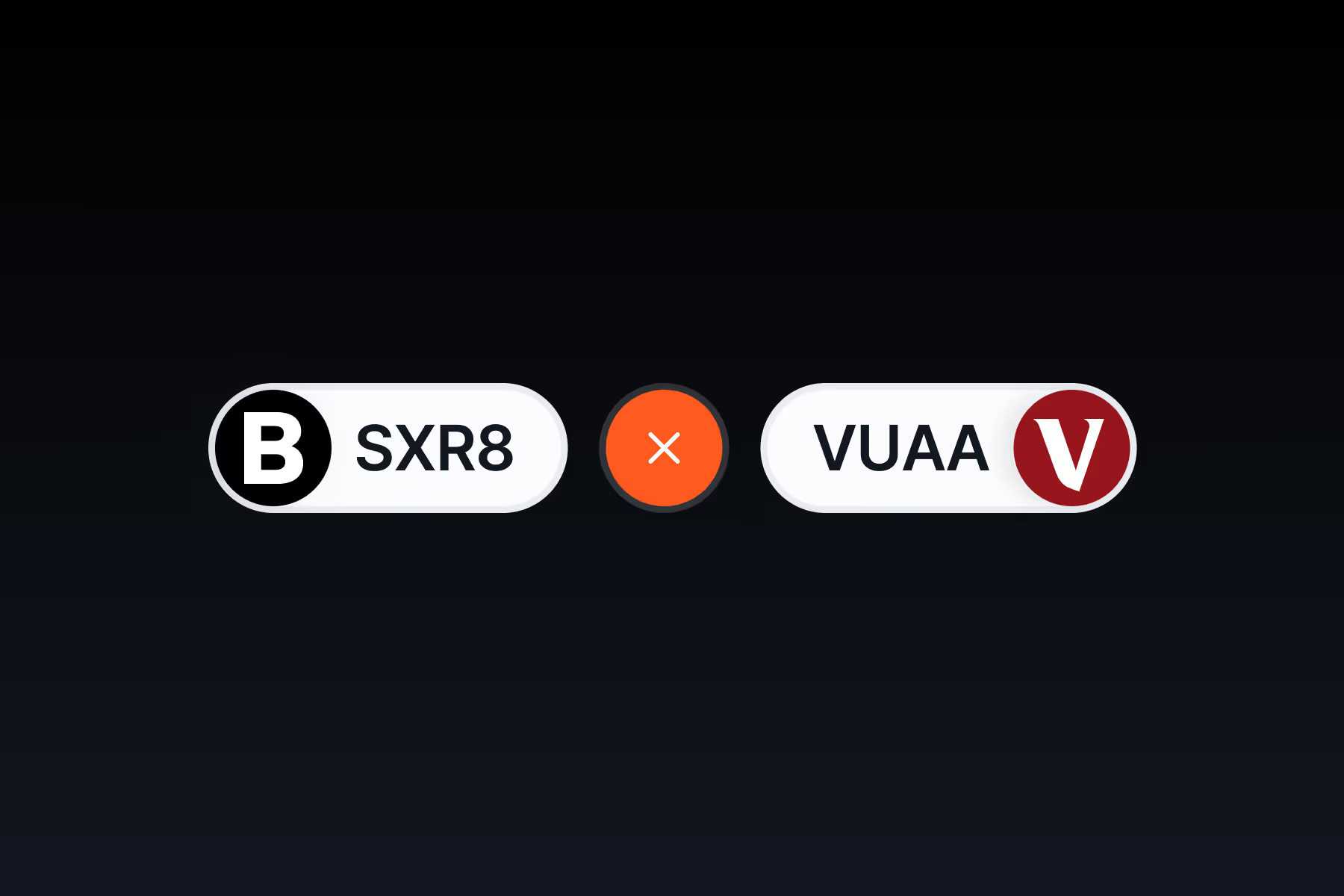SXR8 vs. VUAA: Which should you choose? Analysis for 2025


Investing in ETFs continues to be an increasingly popular choice among investors due to their simplicity, diversification, and low costs. Among the most sought-after options in the global market, two names stand out: SXR8 (iShares Core S&P 500 UCITS ETF USD [Acc]) and VUAA (Vanguard S&P 500 UCITS ETF [USD] Accumulating).
Both offer very similar exposure to the S&P 500 index, as we will see later. In this article, we will explore their costs, allocations, and key characteristics, helping you better understand each of them.
Overview
What are SXR8 and VUAA?
Both SXR8 and VUAA are ETFs designed to replicate the performance of the S&P 500 index, meaning they invest in the 500 largest companies based in the U.S. They are widely used by investors as a barometer of the U.S. economy.
Both are accumulating ETFs with physical replication, managed by the two largest asset managers in the world, and with the same cost (TER). They are very similar ETFs.
What Differentiates Them?
As mentioned, both ETFs replicate the same index. The only characteristics that differentiate them are:
- Management Entities:
- SXR8 is managed by iShares (a subsidiary of BlackRock focused on ETFs).
- VUAA is managed by Vanguard.
These are the two largest asset managers in the world.
- Creation Date:
- SXR8 was created in 2010, while VUAA was created in 2019. Since SXR8 has been on the market for much longer, its Assets Under Management (AUM) are significantly higher, as seen in the table above.
- Unit Price:
- As of the date of this article, SXR8 was priced at ~€615, while VUAA was priced at ~€110. This means that to buy one "share" of SXR8 and VUAA, you would need to pay ~€615 and ~€110, respectively.
- The unit price is insignificant because it is simply the result of the fund's value divided by the number of shares. In other words, one is not "more expensive" than the other. Investing in either will give you the same exposure to the S&P 500 index.
Performance
Since both ETFs replicate the same index, have the same costs, and use the same replication method, their performance is very similar, as you can see in the image below (the two lines overlap, so it looks like a single line):

And in the performance table, which covers various analysis periods:

Sector allocation
The sector allocation of both ETFs mirrors that of the S&P 500 index. As you can see in the image below, the sectors with the highest weight are Information Technology, Financials, and Consumer Discretionary:


Total Expense Ratio (TER)
The TER (Total Expense Ratio) is an indicator that reflects the total expenses associated with a fund, including management fees, administration, and other operational costs. It is expressed as an annual percentage and shows how much the investor pays, on average, for the fund. The lower the TER, the lower the cost of the fund, which benefits the investor.
In the case of SXR8 and VUAA, the TER is 0.07% per year.
Risk Factors
Although the strategies of SXR8 and VUAA offer a diversified way to invest, it is important to understand the associated risks.
- Market Risk and Global Exposure: Both invest exclusively in stocks, meaning they are more exposed to market volatility. If stock markets fall, your investment will also suffer losses. To mitigate this risk, consider diversifying into other asset classes, such as bonds.
- Currency Risk: Although SXR8 and VUAA are traded in euros (EUR) on European exchanges, their underlying assets are denominated in U.S. dollars (USD). As a result, fluctuations in the EUR/USD exchange rate can affect your returns. A depreciation of the dollar could reduce your gains when converting to EUR, even if the ETF performs well.
- Inflexibility in Asset Allocation: With SXR8 and VUAA, you are "tied" to the respective index they replicate. If you prefer greater control over specific regions or sectors, these ETFs may limit your flexibility in portfolio management.
Brokers to invest in SRX8 and VUAA
To help you make an informed decision, we have evaluated and highlighted the main ETF brokers available in Europe:
In addition to transaction fees, you may also incur other fees, such as custody fees. DEGIRO is the only one that charges a connectivity fee of €2.50 per year, per exchange.
Which Should I Choose?
Choosing between SXR8 and VUAA should lead to the same result. As we saw above, the differences between them do not impact their performance. From this perspective, it makes no difference which one you choose.
However, for those looking to invest smaller amounts on brokers that do not offer fractional shares, such as DEGIRO, VUAA may be a better option due to its lower unit price.
Regardless of your choice, both are excellent financial instruments for passive, long-term investing.
Disclaimer: This article is for informational purposes only and does not constitute financial investment advice. Before making a decision, you should conduct your own analysis and evaluate the risks involved.





